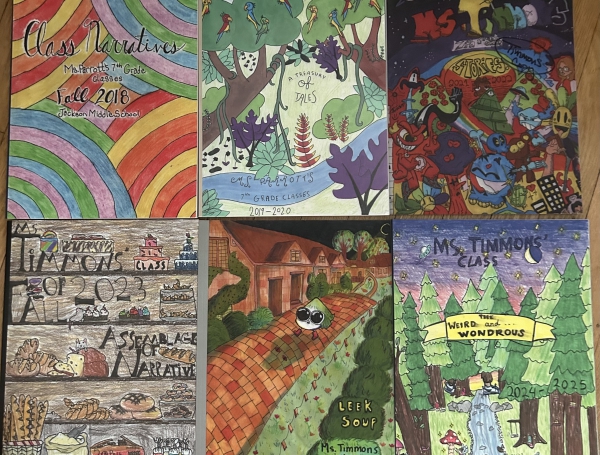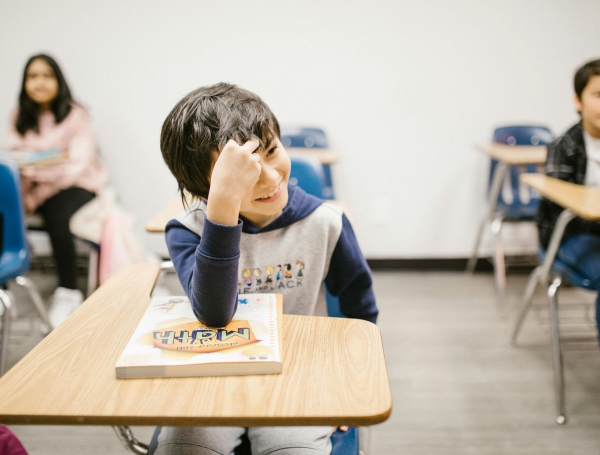

Be an Inspiration for Organization!
August 16, 2017
As teachers, we all want our students to be organized. We want them to be able to find any supply at a moment’s notice, hand in all of their completed work, and have no more than one sweatshirt, jacket and pair of mittens in their cubby on any given day. With that being said, I know that if I expect that of my students, I need to model it as well. A task, for me, that is much easier said than done! Thankfully, there are a number of strategies I have learned from the book and Heritage Institute Continuing Education course, Organizing from the Inside Out, to help me get started on the right foot for the upcoming school year.
In her book, Julie Morgenstern proposes her own definition of organization as “the process by which we create environments that enable us to live, work, and relax exactly as we want to.” She adds that “When we are organized, our homes, offices and schedules reflect and encourage who we are, what we want, and where we are going.” Living, working and relaxing in ways that are satisfying and encouraging are worthwhile goals to strive for and to pass on to our students. Those who struggle with organization most especially need our help with just that!
According to Morgenstern, the first step in becoming more organized is to analyze and identify the problem. Is disorganization caused by items that have no home? Is there more stuff than space? Does the speed of life move so fast that time for organization is overlooked? Is there a concern that when things are placed out of sight they may be forgotten? During this stage it is important not only to identify what is not working, but to identify what is working as well. Everyone has something they are doing right! This is especially important for children who struggle with disorganization, as the realization that they are doing something that works will help them build the confidence they need to move forward.
The second step is to strategize. Choose important spaces, or zones, to work on one at a time and identify the reason things will be better once they become organized. This will be the motivation needed to keep working on improvement. Next, identify and list activities that take place in each zone as well as the essential items needed to complete them. Create a plan of attack by scheduling a time that will be dedicated to organizing. Be sure to allocate enough time to create change and stick to your schedule. Creating a schedule that is broken down into manageable chunks is a great lesson for students who do not see life through an organized lens. This practice will help them not only in organizing their space, but in managing other long term projects as well!
The third step is to attack. Now is the time to sort items that are in the chosen zone, identifying which are important and necessary for the activity that takes place there. After sorting, it is time to purge. This is the time to decide which things you should get rid of, and where they should go. Categorize these items as things that should be thrown away, things that should be stored elsewhere, and things that can be donated. Once this is finished, it is time assign a home for items that remain. Group items into categories so that like items will be stored together. Determine appropriate spaces for items to be housed and decide whether or not containers are needed. If they are, be sure to measure spaces before purchasing to avoid wasted time and money. When working with students, it would be helpful to have a copy of these steps on a checklist as a visual reminder of what has been accomplished and what tasks remain.
Once an area has been organized, it is important to make a plan to equalize. This involves making a plan to schedule time each day (or week) to check on organization and returning things to order, adjusting strategies and systems that aren’t working as needed. This is crucial to developing the long lasting habits of organization we strive for. For further information and tips on becoming more organized, I highly recommend Julie Morgenstern’s book, Organizing From the Inside Out. Her expertise is just what is needed to accomplish the goal of becoming an inspiration for organization!
This guest post was written by Teacher Julie Parker after completing The Heritage Institute course Organizing from the Inside Out with Mary Ann Johnson.
 Julie Parker teaches third grade at Terrace Park Elementary School in Terrace Park, Ohio (a suburb of Cincinnati). Having taught for 30 years in grades K-4 in both inner city and suburban schools, she can happily say that teaching is her passion! Julie has had the privilege of living and teaching in the same community for the past 16 years and has loved working alongside her own children as well as keeping up with all of her students as they continue to grow through high school and college. Outside of teaching and parenting, Julie loves to read, coach Girls on the Run, and volunteer for Camp Stepping Stones, a local camp for students with disabilities.
Julie Parker teaches third grade at Terrace Park Elementary School in Terrace Park, Ohio (a suburb of Cincinnati). Having taught for 30 years in grades K-4 in both inner city and suburban schools, she can happily say that teaching is her passion! Julie has had the privilege of living and teaching in the same community for the past 16 years and has loved working alongside her own children as well as keeping up with all of her students as they continue to grow through high school and college. Outside of teaching and parenting, Julie loves to read, coach Girls on the Run, and volunteer for Camp Stepping Stones, a local camp for students with disabilities.




